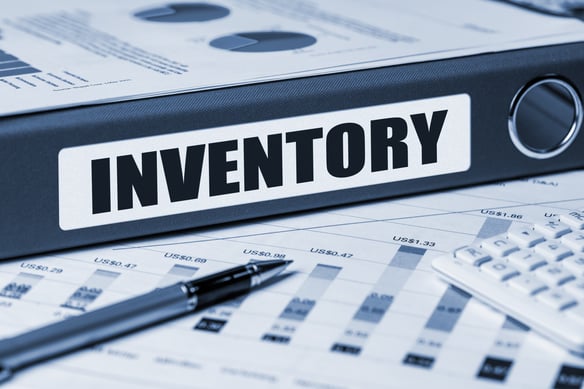Or, what to do when slow-moving inventory takes up too much valuable space in your warehouse.
Inventory is like electricity: you can't run your business without it, but it's rarely top of mind. However, unlike electricity, inventory takes up physical space, it's expensive to store, and someone has to actively organize and track it even when it's not needed.
Slow-moving inventory (SMI), which is typically anything that's been hanging around your premises for more than 90 days, can be a serious drag on both profitability and operations. When limited capital is tied up in unsold goods, it reduces your revenue, cash on hand, and return on invested capital (ROIC). And when unused or obsolete inventory takes up valuable shelf space, it means room for more active inventory or newly introduced SKUs is not available.
Industrial companies that hold large amounts of spare parts for aftermarket services often face a lack of storage, especially when inventory usage slows. That's when they need a backup storage solution — one that is low cost but can still support customers in a timely manner.
It's getting harder to build new storage capacity on your own
The groundswell of demand for local overnight delivery that started during the pandemic has not abated, leaving many companies scrambling to find new warehouse space in order to get inventory closer to customers. In fact, according to real estate services firm Cushman & Wakefield, industrial property under construction in the U.S. increased by nearly 55% in Q4 2021 compared with the same period in the prior year.
Yet even Amazon, the world's largest retailer, is finding it harder to build, operate, and manage its own free-standing storage facilities. The e-commerce giant had to cancel plans to open a four-story facility in a Pittsburgh suburb earlier this year when it became the target of persistent protests over concerns about increased industrial traffic, noise, and pollution.
Residents in towns and cities are rebelling against a growing push to bring distribution centers closer to neighborhoods and areas unaccustomed to industrial traffic." - The Wall Street Journal
Advantages to outsourcing point-of-use storage for slow-moving inventory
Across the nation, local citizens are resisting the push to open new mega-warehouses in small communities. At the same time, global brands like British engine maker Rolls-Royce say they're being forced to retain, repair, and reuse spare airplane parts as they struggle with inflation and lingering supply chain disruptions. The pressure to get smarter about where to hold critical time-sensitive inventory — so that it's readily available when needed — is real.
An affordable and convenient local warehouse operated by a reliable third-party logistics partner can be an ideal place to keep old or excess inventory that's just taking up space. This is especially true for small and medium-sized businesses that lack the room and resources to do it themselves. For these companies, Cura Group offers an economical and creative alternative to DIY storage options. We provide:
- shared or single-seller offsite locations
- secure facilities
- online or in-person ordering
- professional customer service
- all staffing, payroll, and inventory management systems
Best of all, you can let us worry about the neighbors!
About Cura Group
Cura Group specializes in providing custom local distribution services to help small and medium-size companies be more productive and open profitable new markets.
Is excess and slow moving inventory taking up valuable space in your warehouses and stockrooms? Contact us to learn how moving it to a Cura Group site can open up space for more of your top selling, revenue generating parts.
Related Blog Posts:

